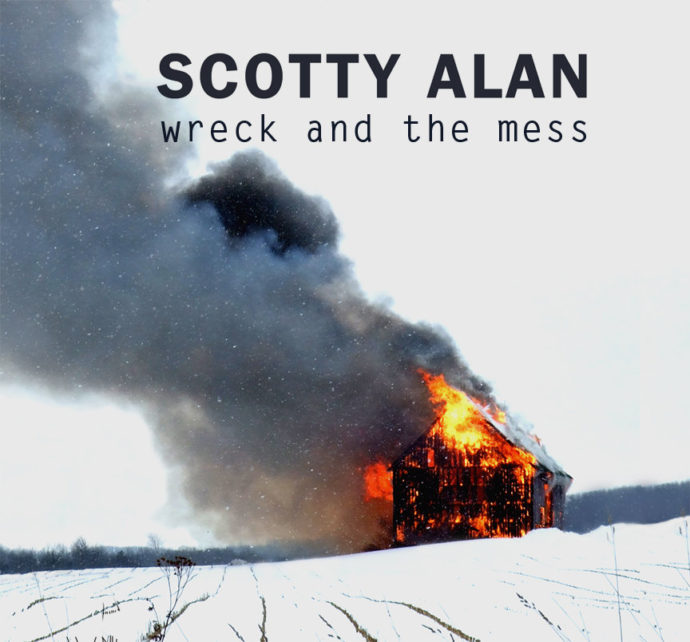By A. L. Boulden
Wreck and the Mess is a folk album coming from the heart on Scotty Alan‘s sleeve. The album begins with a song called “Good-Bye” that uses similar chords and structure to that of the Robert Burns poem-turned folk song, “Auld Lang Syne.” We can see by this similarity that Alan legitimizes himself as a folk artist. The song begins, “Goodbye my love, goodbye my love. We’ll meet again some other time, can’t say where, when, or why.” The song sets the mood for the entire album and takes the listener on a journey that deals with lost love and eventually the longing for a companion. Wreck and the Mess retains a high quality because of the professional studio musicians and the story that Alan weaves into an impressive 15 songs.
Fiddler, David Lindley, and female backing vocalist, Kristin Mooney shine through on Wreck and the Mess. Lindley has worked with Jackson Browne and Bob Dylan, while Mooney has recorded with artists like Norah Jones and Keith Richards. Lindley plays a clean fiddle but keeps his acoustic lap slide sounding dirty and loose. Because the album talks about the love between a man and woman, its enjoyable to hear songs such as “Good-Bye” and “Sinkin’ In” that use female and male harmonies to depict that the pain affects both people in the relationship. Alan’s voice is the most prominent figure in the album which is a result of the production.
When a relatively unknown artist is practiced enough to record a full length album, the modern trend with production, mixing and mastering is to put most of the emphasis on the individual artist. It gives the album a singer-songwriter feel, but takes away from the seasoned musicians who lay down intricate and interesting tracks. The decision is logical because it showcases the new artist. However, when emphasis is taken away from all the professional studio musicians who worked on the album, like is done in Wreck and the Mess, the listener is left disappointed. The backing vocals from Kristin Mooney and Jorge Calderón are mixed quietly in parts, along with the cymbals and bass drum. A song such as “Ain’t Much” is supposed to be a foot-stomping good time, but the mix does not give it the power it needs. Showcasing an artist can only take them so far, listeners want to hear every note of the guitar solos and harmonies from professionals working with the new artist.
Scotty Alan does have a unique voice to give to the audience. He is raspy with a twang that borders on country and older scotch-Irish ballad singers. He tells a good story with the album, and the sound is consistent. Because of the story-like quality that Alan uses in this album, many of the songs are not catchy and feel like they drag on for too long. However, this feeling could stem from Alan’s apparent sadness throughout the whole album. Alan has a big heart and it would do him well to keep recording and mastering his folk sound.
Rating: 4.9/10

